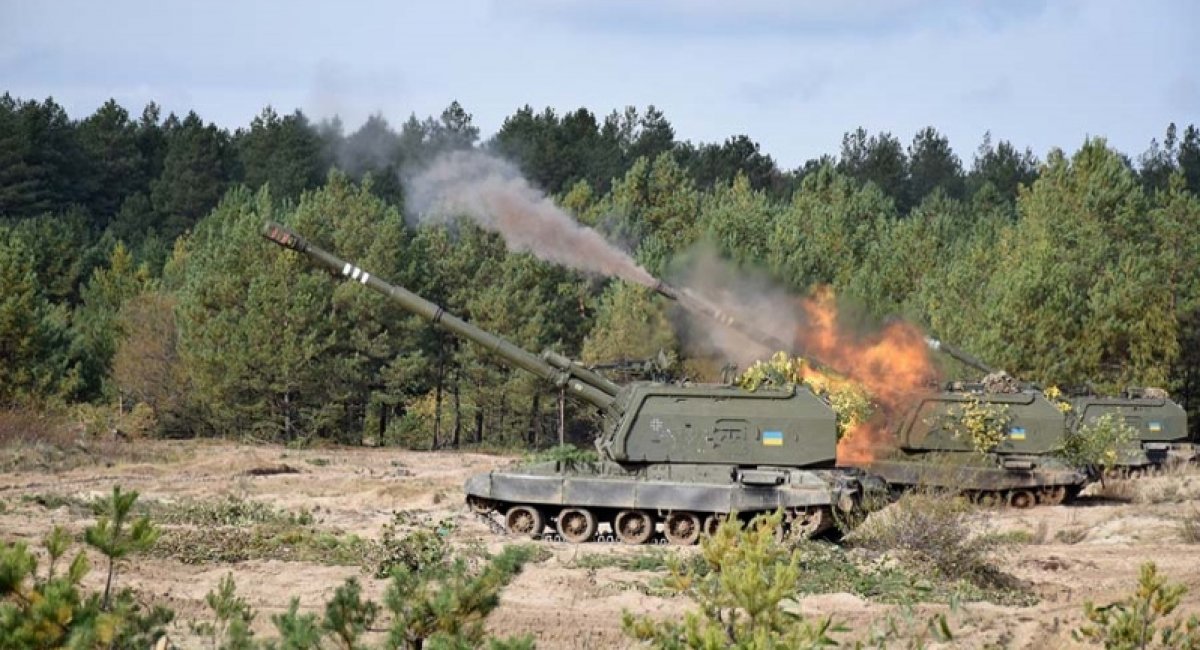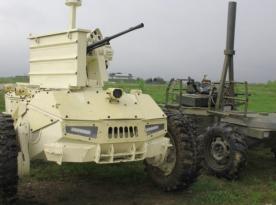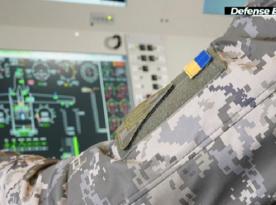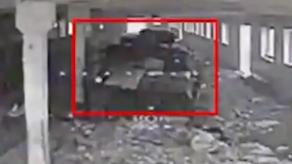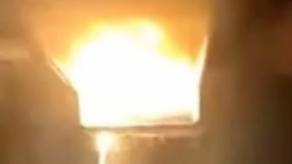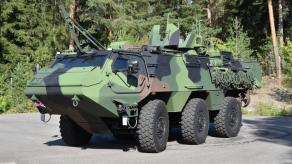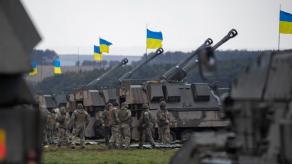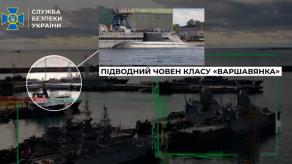This would be a response given by Ukrainian armaments engineers to the Russian threat on the battlefield.
New-generation evolution of the Kvitnyk Technology
Cannon artillery needs to be capable of striking targets with pinpoint accuracy if it is to continue to be used on the battlefield. More and more armed forces are now placing a preference on developing precision-guided artillery munitions for use from the guns already in service. The local conflicts of the modern era have forced militaries across the world to look for innovative solutions for the battlefield, while the demands placed on precision artillery weapons have become more stringent than ever. Ukraine has in store some solutions that could be truly trend-setting.
Read more: How to counteract Russian hybrid hostile actions: case of Ukraine
Kvitnyk, Karasuk, Krucha -- New Smart Munition Technologies from Progress Company
Developed by the ‘Tochnist’ Central Research, Development & Technology Company (Progress’ affiliate), the Kvitnyk (also known as Kvitnyk-E in its export-market version) is meant to be fired from defilade positions to deliver precision attacks on targets out to 20 km without the need for preliminary fire adjustment. Targets that can be engaged with this smart weapon are artillery, MLR and rocket launcher emplacements, self-propelled artillery systems, tanks, infantry fighting vehicles and armored transporters (both moving and at rest), bunkers, bridges and ferries, assault landing ships, transport vessels and boats.
In terms of terminal effectiveness, a single Kvitnyk round is as effective as 200-300 high-explosive fragmentation (HEF) gun-fired rounds in service with Ukrainian and other forces. With guided artillery munitions vs ordinary HEF rounds, the cost and time budgets for any given firing mission could be reduced 3- to 10-fold and 5- to 10-fold, respectively, and the number of guns required to neutralize a given target could be decreased 2- or 3-fold.
The guided artillery round ‘Kvitnyk’ 1S2 was adopted by the Ukrainian Armed Forces in December 2012 after having succeeded through official qualification trials process.
However in 2014 with the onset of Russian military intervention in eastern Ukraine it turned out impossible to send the Kvitnyk into series production because it was designed with some components that needed to be sourced from Russia. To handle this challenge, Progress and Tochnist had redesigned the Kvitnyk technology with domestically-produced components in place of ones sourced from Russia previously. Beyond that, the resulting design incorporates innovative solutions that enabled substantial capability-enhancing improvements and advantages over the initial version that the Ukrainian military adopted in 2012, the two companies said.
The advantages include a wider range of the gun types suited to firing this ammunition piece, a longer range targets can be engaged, improved resistance to enemy jamming attempts, and the introduction of digital signal processing capability among other things. As a matter of fact, the upgrade has produced a new projectile with substantially enhanced capabilities compared to the original Kvitnyk technology.
The Kvitnyk, in its upgraded configuration and without Russian-sourced components used, weighs 48 kg (including a 8 kg-plus high-explosive payload) with a length of 1.2 m.
The Kvitnyk projectile is a two-component design with guidance and explosive components. The guidance component is composed of nose assembly, target seeking head and autopilot system. The explosive component comprises warhead and stabilizing fins integrated into a single block with booster motor.
The technology designers claim the new round is capable of ranges in excess of 20 km. The upgraded Kvitnyk can be fired from 152-mm towed and self-propelled artillery cannons such as D-20, 2A65, 2S3 ‘Akatzia’ and 2S19 ‘Msta-S’ howitzers.
The Kvitnyk, in contrast to ordinary artillery shells, can successfully engage targets when fired from defilade – with high first-round-hit accuracy and without preliminary fire adjustment. Extensive use of precision-guided munitions in battlefield settings could alter the methods and techniques of enemy target engagement with gunfire. Guided artillery projectiles can be fired for effect without the need for handling a full set of weather and ballistic variables to accurately aim point the weapon. The Kvitnyk can be fired at stand-alone targets at a rate of three rounds per minute without preliminary fire adjustment. The projectiles can be fired in ripples against highly hardened targets, or they can be fired simultaneously from several guns against different targets without interfering with each other.
A platoon-size strongpoint, for example, will take 12 guided projectiles and 3 minutes, or 800 standard unguided shells and 12 minutes to destroy, and with substantially less friendly casualties in the former case.
The Kvitnyk projectile is designed such as to enable it to be adjusted for deployment from 155-mm cannons such as М190 А2/А6 (USA), G6 (SAR), FH77B (Sweden), or TRF1 (France).
120/122-mm guided projectiles ‘Karasuk’ and ‘Krucha’
Тhe expertise that Tochnist has acquired in developing the Kvitnyk technology motivated it to expand its lineup of ‘smart’ artillery munitions. There is talk about the guided 122-mm projectile known as ‘Karasuk’ and the 120-mm guided mortar round designated as 'Krucha', which Tochnist developed jointly with Progress in 2019. The Karasuk is meant to be deployed from 122-mm cannons such as D-30 or the self-propelled gun system 2S1 Akatzia that are both operational with Ukraine’s Armed Forces. The Karasuk is claimed to have 100% first-round hit probability at ranges up to 12 km. It is intended to destroy field fortifications and light armored targets, both at rest or moving at up to 40 km/h. It can be effective also against tank targets due to having a highly lethal payload and a top-attack capability increasing the probability that the target would be hit in its most vulnerable, upper section.
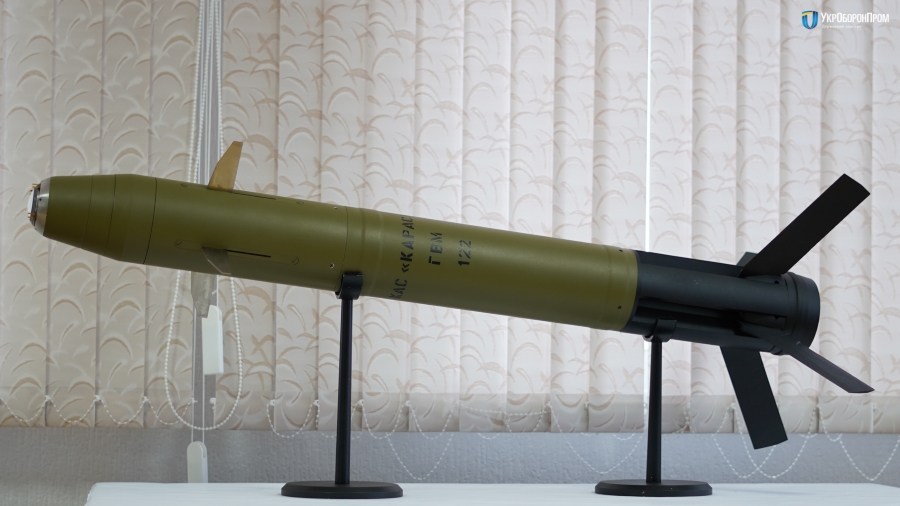
The mortar round ‘Krucha’ has been developed as a key component of a guided weapon system for use with 120-mm mortars. Conceivably, the mobile, precision guided mortar system will be an effective weapon against highly mobile opposing forces and against small-size targets like fighting vehicles and weapons emplaced in buildings or behind artificial protective barriers, in mountainous and otherwise challenging terrains. The Krucha is designed with a range of 8 m, a mass of about 27 kg and a length of approximately 1.2 m. Its warhead is armed with a 5 kg-plus explosive payload.
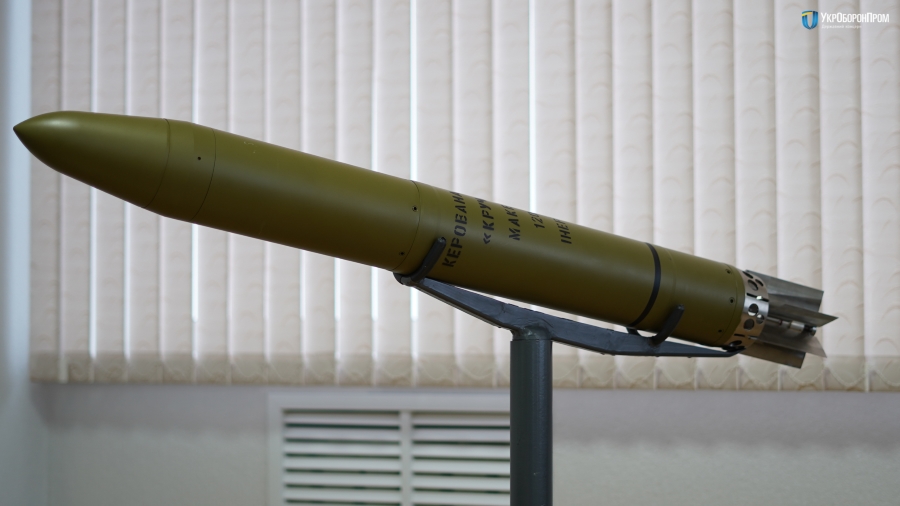
It is claimed that guided mortar weapon systems can contribute significantly to effectiveness and efficiency of mortar firing engagements -- and especially so when deployed in rugged landscape terrains unsuitable for heavy guns – because they provide the ability to fire at targets moving in narrow passages and between buildings, or hidden behind hills and other barriers.
With its highly lethal high-explosive fragmentation (HEF) payload, the Krucha round could be effective not only against armored targets but personnel targets as well. It is preliminary estimated that it would take from 100 to 200 ordinary mortar shells to neutralize a gun emplacement, with crew, vs just one or two guided mortar shells.
All the guided munitions therein mentioned are fitted with a unified seeker head developed by Tochnist for these applications.
A few words about how the Kvitnyk works
The use of guided munitions requires a high level of coordination between gun crews and advance reconnaissance teams with forward observers as key members. Prior to being fired at a target distanced 7 km away (in a realistic scenario, this distance is by far shorter), the weapon requires a forward observer near the target to illuminate it with a laser beam to aim the projectile at the exact target. The forward observer would be required to have a radio and a firing synchronization device in addition to a laser designator. This task could be done by an adequately equipped drone or troops on the ground.
Once the target is selected, the forward observer would use the laser designator/rangefinder to find out the target’s position in range and azimuth, and to calculate its azimuth angle. Firing charts will then be used to calculate firing data, in the manner as used for unguided artillery pieces. The data is then radio transmitted by voice to the gun crew in the rear.
The loader would then use a programming device to program the weapon for the desired mode.
Immediately once the projectile leaves the barrel, a signal is transmitted via an encrypted link to the laser designator/rangefinder (that is where the firing synchronization device comes in) which would then countdown the time needed to turn on the laser target illuminator.
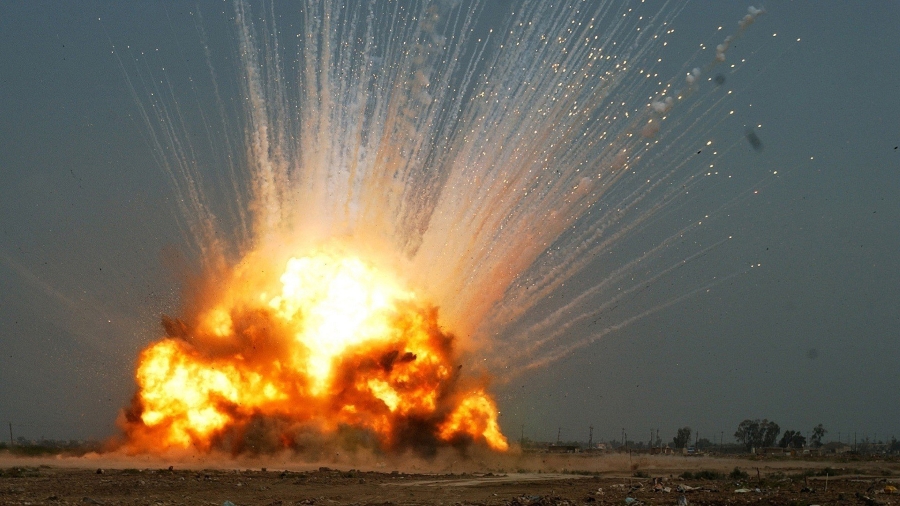
At a preset time (usually 5-12 seconds to impact), the laser designator would automatically switch over to pulse mode. By that time the seeker head on the projectile would be ready to capture the reflected laser beam from the target. This all is what makes the weapon so highly accurate. The same operational algorithm is applicable to the ‘smart’ guided shells ‘Karasuk’ and ‘Krucha’.
The expansive use of smart munitions would come with benefits in terms of a substantially lesser amount of ammunition required for a given mission, reduced logistical footprint and a higher level of operational and tactical mobility.
Read more: Ukraine has created new missile systems



